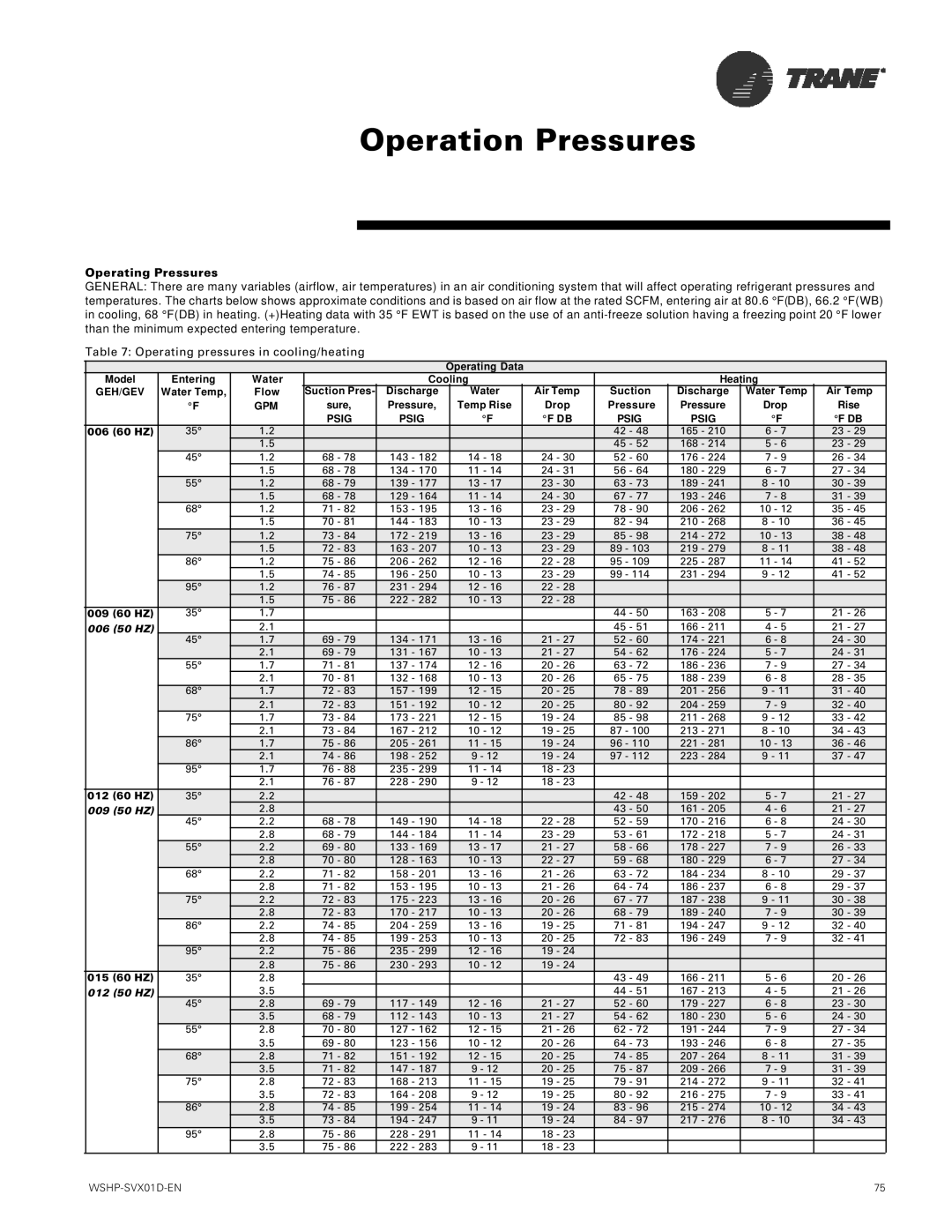GEV, GEH specifications
Trane has long been a leader in the HVAC industry, and their GEH and GEV series of heat pumps are a testament to their commitment to innovation and efficiency. These models are designed to provide substantial energy savings while maintaining exceptional performance, making them ideal choices for both residential and commercial applications.The Trane GEH and GEV heat pumps feature advanced variable-speed technology, which allows them to adjust their output to match the current heating or cooling demand. This adaptability not only enhances comfort by maintaining a consistent indoor temperature but also leads to significant energy savings by reducing unnecessary energy consumption during partial-load conditions. By running more efficiently at lower speeds, these units reduce wear and tear on components, extending the lifespan of the system.
One of the defining characteristics of the GEH and GEV models is their high SEER (Seasonal Energy Efficiency Ratio) and HSPF (Heating Seasonal Performance Factor) ratings. These ratings demonstrate the units' ability to provide efficient heating and cooling throughout the year, contributing to lower energy bills. The use of R-410A refrigerant is another key feature, as it is both environmentally friendly and efficient, ensuring that these systems meet stringent regulatory standards while delivering reliable performance.
Installation flexibility is another highlight of the Trane GEH and GEV series. These units are designed to work seamlessly with existing HVAC systems, making retrofitting straightforward. Their compact design allows for easy placement, even in tight spaces, without compromising performance. Additionally, Trane's commitment to quality is evident in the construction of these heat pumps, as they are built to withstand harsh weather conditions and provide reliable service year after year.
Moreover, both the GEH and GEV models are equipped with integrated smart controls that simplify operation and maintenance. These controls allow homeowners and facility managers to monitor energy usage, adjusting settings remotely and scheduling maintenance checks to maximize efficiency. This technology not only enhances user experience but also promotes energy conservation through intelligent management.
In summary, Trane's GEH and GEV heat pumps stand out for their variable-speed technology, high efficiency ratings, installation flexibility, and smart controls. These features make them an ideal solution for those seeking a reliable, energy-efficient heating and cooling option, reflecting Trane's dedication to performance and sustainability.

